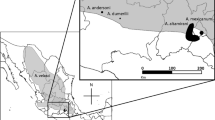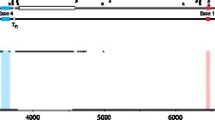Abstract
Major histocompatibility (MHC) molecules are encoded by extremely polymorphic genes and play a crucial role in vertebrate immunity. Natural selection favors MHC heterozygous hosts because individuals heterozygous at the MHC can present a larger diversity of peptides from infectious pathogens than homozygous individuals. Whether or not heterozygote advantage is sufficient to account for a high degree of polymorphism is controversial, however. Using mathematical models we studied the degree of MHC polymorphism arising when heterozygote advantage is the only selection pressure. We argue that existing models are misleading in that the fitness of heterozygotes is not related to the MHC alleles they harbor. To correct for this, we have developed novel models in which the genotypic fitness of a host directly reflects the fitness contributions of its MHC alleles. The mathematical analysis suggests that a high degree of polymorphism can only be accounted for if the different MHC alleles confer unrealistically similar fitnesses. This conclusion was confirmed by stochastic simulations, including mutation, genetic drift, and a finite population size. Heterozygote advantage on its own is insufficient to explain the high population diversity of the MHC.


Similar content being viewed by others
References
Acevedo-Whitehouse K, Gulland F, Greig D, Amos W (2003) Inbreeding: disease susceptibility in California sea lions. Nature 422:35
Apanius V, Penn D, Slev PR, Ruff LR, Potts WK (1997) The nature of selection on the major histocompatibility complex. Crit Rev Immunol 17:179–224
Barouch D, Friede T, Stevanovic S, Tussey L, Smith K, Rowland-Jones S, Braud V, McMichael A, Rammensee HG (1995) HLA-A2 subtypes are functionally distinct in peptide binding and presentation. J Exp Med 182:1847–1856
Beck K (1984) Coevolution: mathematical analysis of host-parasite interactions. J Math Biol 19:63–77
Bodmer WF (1972) Evolutionary significance of the HLA system. Nature 237:139–145
Borghans JAM, Beltman JJ, De Boer RJ MHC polymorphism under hostpathogen coevolution. Immunogenetics. DOI 10.1007/s00251-003-0630-5
Carrington M, Nelson GW, Martin MP, Kissner T, Vlahov D, Goedert JJ, Kaslow R, Buchbinder S, Hoots K, O’Brien SJ (1999) HLA and HIV-1: heterozygote advantage and B*35-Cw*04 disadvantage. Science 283:1748–1752
Davenport MP, Quinn CL, Chicz RM, Green BN, Willis AC, Lane WS, Bell JI, Hill AV (1995) Naturally processed peptides from two disease-resistance-associated HLA-DR13 alleles show related sequence motifs and the effects of the dimorphism at position 86 of the HLA-DR β chain. Proc Natl Acad Sci USA 92:6567–6571
Doherty PC, Zinkernagel RM (1975) Enhanced immunological surveillance in mice heterozygous at the H-2 gene complex. Nature 256:50–52
Hedrick PW (2002) Pathogen resistance and genetic variation at MHC loci. Evolution 56:1902–1908
Hill AV, Allsopp CE, Kwiatkowski D, Anstey NM, Twumasi P, Rowe PA, Bennett S, Brewster D, McMichael AJ, Greenwood BM (1991) Common west African HLA antigens are associated with protection from severe malaria. Nature 352:595–600
Hughes AL, Nei M (1988) Pattern of nucleotide substitution at major histocompatibility complex class I loci reveals overdominant selection. Nature 335:167–170
Hughes AL, Nei M (1989) Nucleotide substitution at major histocompatibility complex class II loci: evidence for overdominant selection. Proc Natl Acad Sci USA 86:958–962
Hughes AL, Nei M (1992) Models of host-parasite interaction and MHC polymorphism. Genetics 132:863–864
Hughes AL, Yeager M (1998) Natural selection at major histocompatibility complex loci of vertebrates. Annu Rev Genet 32:415–435
Jeffery KJ, Bangham CR (2000) Do infectious diseases drive MHC diversity? Microbes Infect 2:1335–1341
Jeffery KJ, Siddiqui AA, Bunce M, Lloyd AL, Vine AM, Witkover AD, Izumo S, Usuku K, Welsh KI, Osame M, Bangham CR (2000) The influence of HLA class I alleles and heterozygosity on the outcome of human T cell lymphotropic virus type i infection. J Immunol 165:7278–7284
Kast WM, Brandt RM, Sidney J, Drijfhout JW, Kubo RT, Grey HM, Melief CJ, Sette A (1994) Role of HLA-A motifs in identification of potential CTL epitopes in human papillomavirus type 16 E6 and E7 proteins. J Immunol 152:3904–3912
Klein MR, Keet IP, D’Amaro J, Bende RJ, Hekman A, Mesman B, Koot M, De Waal LP, Coutinho RA, Miedema F (1994) Associations between HLA frequencies and pathogenic features of human immunodeficiency virus type 1 infection in seroconverters from the Amsterdam cohort of homosexual men. J Infect Dis 169:1244–1249
Lewontin RC, Ginzburg LR, Tuljapurkar SD (1978) Heterosis as an explanation for large amounts of genic polymorphism. Genetics 88:149–170
Maruyama T, Nei M (1981) Genetic variability maintained by mutation and overdominant selection in finite populations. Genetics 98:441–459
Nagylaki T (1992) Introduction to theoretical population genetics. Springer, Berlin Heidelberg New York
Parham P, Ohta T (1996) Population biology of antigen presentation by MHC class I molecules. Science 272:67–74
Parham P, Benjamin RJ, Chen BP, Clayberger C, Ennis PD, Krensky AM, Lawlor DA, Littman DR, Norment AM, Orr HT, et al (1989a) Diversity of class I HLA molecules: functional and evolutionary interactions with T cells. Cold Spring Harbor Symp Quant Biol 54:529–543
Parham P, Lawlor DA, Lomen CE, Ennis PD (1989b) Diversity and diversification of HLAA, B, C alleles. J Immunol 142:3937–3950
Penn DJ, Damjanovich K, Potts WK (2002) MHC heterozygosity confers a selective advantage against multiple-strain infections. Proc Natl Acad Sci USA 99:11260–11264
Potts WK, Manning CJ, Wakeland EK (1991) Mating patterns in seminatural populations of mice influenced by MHC genotype. Nature 352:619–621
Rammensee H, Bachmann J, Emmerich NP, Bachor OA, Stevanovic S (1999) SYFPEITHI: database for MHC ligands and peptide motifs. Immunogenetics 50:213–219
Reusch TB, Haberli MA, Aeschlimann PB, Milinski M (2001) Female sticklebacks count alleles in a strategy of sexual selection explaining MHC polymorphism. Nature 414:300–302
Slade RW, McCallum HI (1992) Overdominant vs. frequency-dependent selection at MHC loci. Genetics 132:861–864
Snell GD (1968) The H-2 locus of the mouse: observations and speculations concerning its comparative genetics and its polymorphism. Folia Biol Praha 14:335–358
Sudo T, Kamikawaji N, Kimura A, Date Y, Savoie CJ, Nakashima H, Furuichi E, Kuhara S, Sasazuki T (1995) Differences in MHC class I self peptide repertoires among HLA-A2 subtypes. J Immunol 155:4749–4756
Takahata N, Nei M (1990) Allelic genealogy under overdominant and frequency-dependent selection and polymorphism of major histocompatibility complex loci. Genetics 124:967–978
Takahata N, Satta Y, Klein J (1992) Polymorphism and balancing selection at major histocompatibility complex loci. Genetics 130:925–938
Van Boven M, Weissing FJ (2001) Competition at the mouse t complex: rare alleles are inherently favored. Theor Popul Biol 60:343–358
Van Eden W, De Vries RR, Mehra NK, Vaidya MC, D’Amaro J, Van Rood JJ (1980) HLA segregation of tuberculoid leprosy: confirmation of the DR2 marker. J Infect Dis 141:693–701
Vogel TU, Evans DT, Urvater JA, O’Connor DH, Hughes AL, Watkins DI (1999) Major histocompatibility complex class I genes in primates: co-evolution with pathogens. Immunol Rev 167:327–337
Weissing FJ, Van Boven M (2001) Selection and segregation distortion in a sex-differentiated population. Theor Popul Biol 60:327–341
Acknowledgements
We thank Ludo Pagie for critically reading the manuscript. J.B. was supported by a Marie Curie Fellowship of the EC program Quality of Life (contract 1999-01548) and C.K. by a fellowship from the Bioinformatics Program of the Dutch Science Foundation (NWO PGBMI 015).
Author information
Authors and Affiliations
Corresponding author
Electronic Supplementary Material
Appendix
Appendix
Standard population genetical theory (Nagylaki 1992) implies that all alleles i present at equilibrium need to have the same marginal fitness, \( w_{i} = {\sum\nolimits_{j = 1}^n {p_{j} f_{{ij}} } } \), where p i is the frequency of allele i, and f ij is the genotypic fitness. From this condition one obtains \( f_{i} {\left( {1 - {\left( {1 - \lambda f_{i} } \right)}p_{i} - \lambda \bar{f}} \right)} = f_{j} {\left( {1 - {\left( {1 - \lambda f_{j} } \right)}p_{j} - \lambda \bar{f}} \right)} \) for all alleles i and j. Here, \( \bar{f} = {\sum\nolimits_{k = 1}^n {p_{k} f_{k} } } \) is the weighted mean allelic fitness contribution. By means of the last identity, one can express all equilibrium frequencies p j by the same p i . Summing up the resulting n equations, one obtains
where \( \hat{f} \equiv n/{\sum\nolimits_{j = 1}^n {f^{{ - 1}}_{j} } } \) is the harmonic mean of the n allelic fitness contributions. Since the leading term is strictly positive, the frequency p i is positive if and only if \( f_{i} > \frac{{n - 1}} {n}\hat{f} \). This shows that MHC alleles with a too low fitness contribution f i cannot persist at equilibrium. Note that this condition for persistence is independent of the choice of λ and the basis fitness value β (Weissing and Van Boven 2001; Van Boven and Weissing 2001).
For a novel allele with fitness contribution f n+1 to invade into an established polymorphism of n alleles, its marginal fitness has to exceed the marginal fitness of the other alleles (Weissing and Van Boven 2001). Writing w n+1>w i , this yields
which can be simplified into
Substituting p i from Eq. 5 gives Eq. 2 in the Results.
To obtain Fig. 1, we substitute f i =(1−s)i−1 into Eq. 2 (Results), where φ≡(1−s); one can test the invasion of the n+1th allele, and simplify to obtain
which can be used to solve the critical s for invasion into any polymorphism of n alleles.
In the asymmetric scenario of Takahata and Nei (1990) heterozygote genotypes all had a fitness f ij =1, whereas the homozygote genotypic fitnesses were set to random values f ii =f i . Requiring the same marginal fitness \( w_{i} = {\sum\nolimits_{j = 1}^n {p_{j} f_{{ij}} } } \) for all alleles yields p i (1−f i )=p j (1−f j ) for all j. By the same procedure one now obtains
which is strictly positive for\( 0 < \bar{f},\;f_{i} < 1 \). Since the marginal fitness of a novel invading allele is one, whereas that of the established alleles is always smaller than one, new alleles can always invade, and poor alleles will never go extinct.
Rights and permissions
About this article
Cite this article
De Boer, R.J., Borghans, J.A.M., van Boven, M. et al. Heterozygote advantage fails to explain the high degree of polymorphism of the MHC. Immunogenetics 55, 725–731 (2004). https://doi.org/10.1007/s00251-003-0629-y
Received:
Revised:
Published:
Issue Date:
DOI: https://doi.org/10.1007/s00251-003-0629-y




